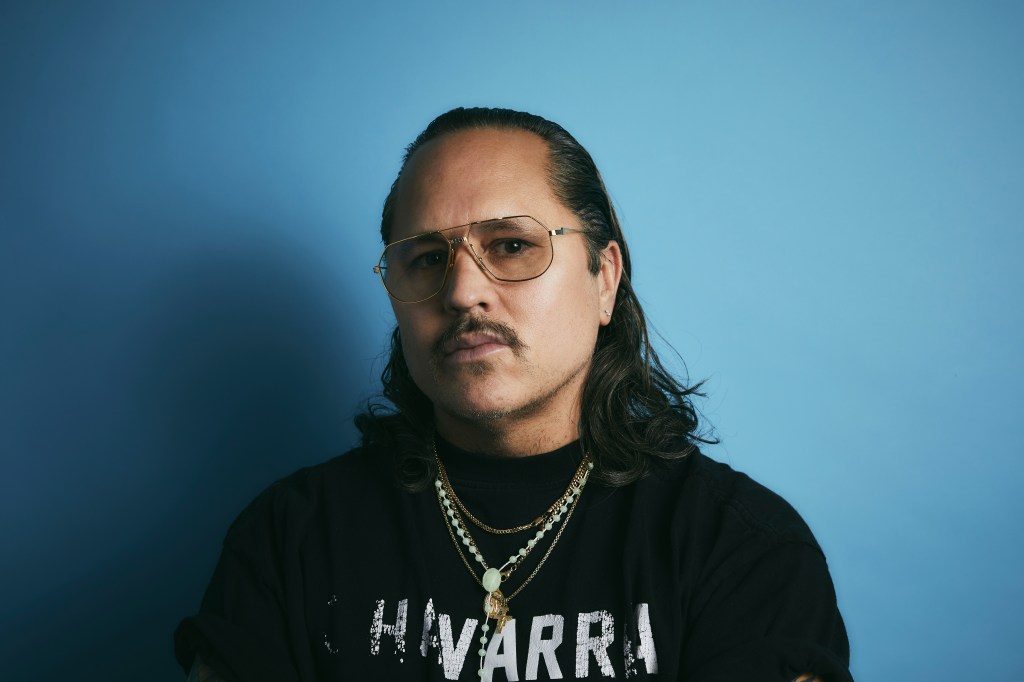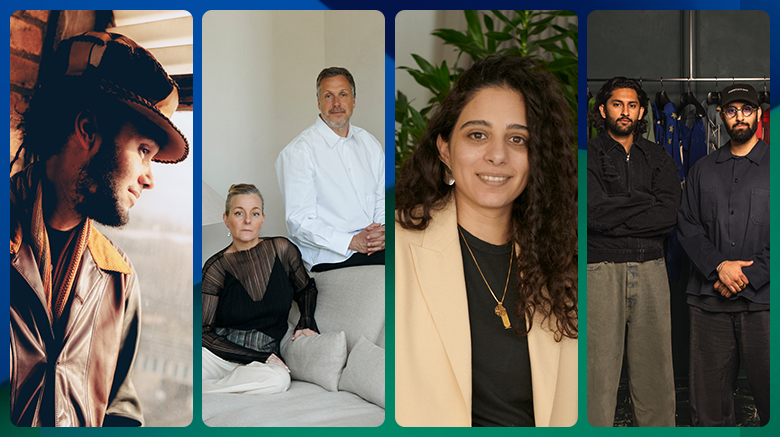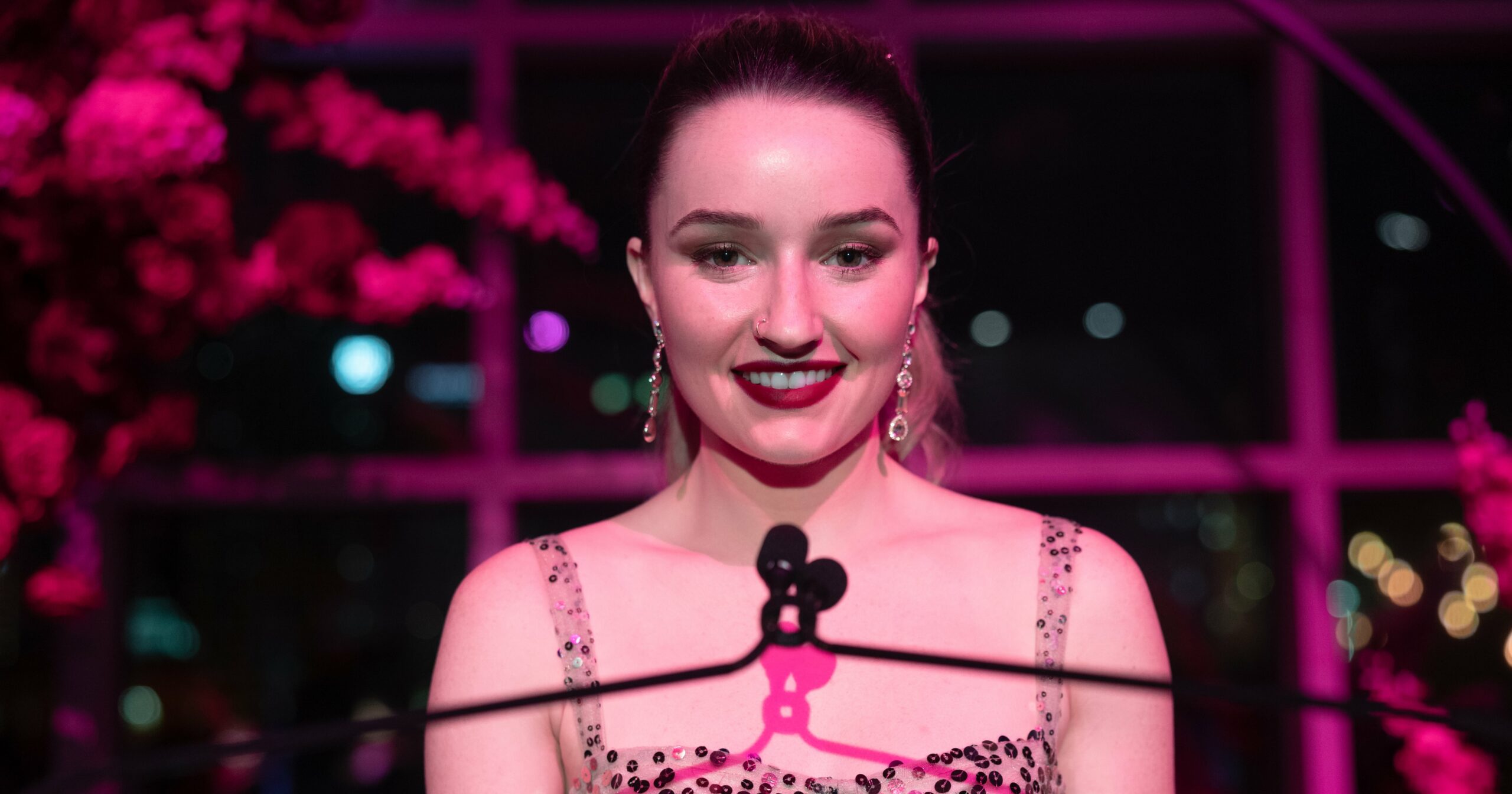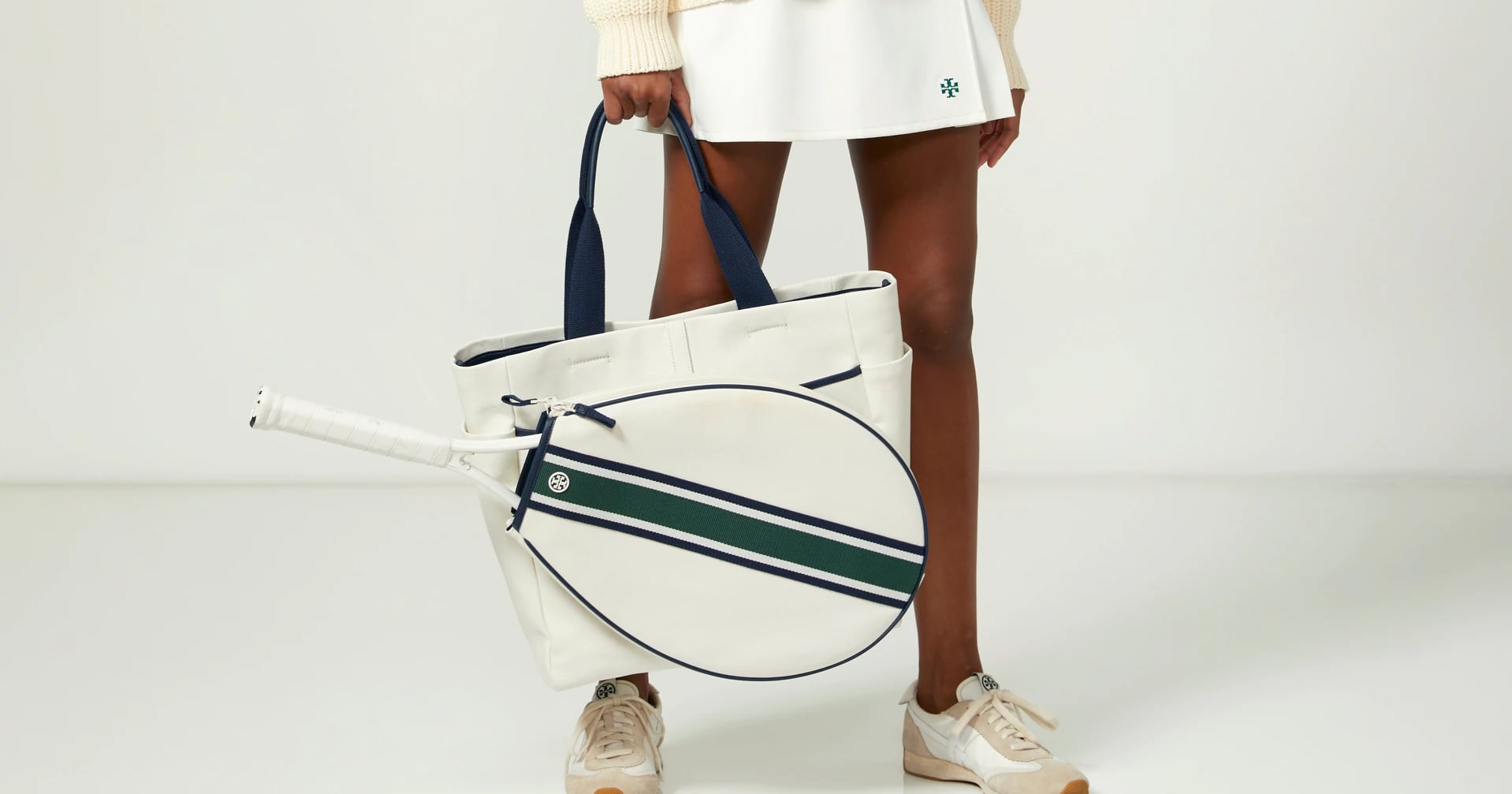Two weeks — that’s all it takes for Willy Chavarria to design one of his collections.
Last year, that was enough to win him nods as “Designer of the Year” at the Latin American Fashion Awards and the CFDA Menswear Designer of the Year.
The rest is all business.
“Luckily, I have the experience of working at corporations at senior levels, where I understand that you start with the big picture and then you get down to the designing of it, and that fits into the big picture,” Chavarria said in an interview at his Greenpoint, Brooklyn, studio.
“I’ll spend a dedicated, maybe two weeks actually designing with my designer and we’ll put it together,” he said. “And that’s still while doing a bunch of other stuff.”
Chavarria is something of a fashion journeyman, having worked with Ralph Lauren, American Eagle Outfitters, Yeezy, Dickies Construct and more. Until last summer, he was senior vice president of design at Calvin Klein, which is in the process of being revamped under a new global structure.
Fashion designers are often seen as having these fabulous lives, filled with red carpets and fancy dinners and awards. Done right, there can be a fair bit of that. But often it is the “other stuff” — the nitty gritty of running a business — that not just fills their days, but determines how successful they are.
Fashion is an art that on a practical level is fueled by commerce.
To get a closer look at just how designers make it all work, WWD sat down with Chavarria to talk about when the designs are done and the decidedly less fabulous business process gets underway.
For starters, each design needs to be assigned a style number. The technical specifications for each look also have be sent to the factory.
“A lot of spreadsheets start to get involved,” Chavarria said.
Each step requires a little more money — funding and the need for more is a steady theme that dominates the business side of most smaller designer businesses.
“There is a company that you need to start working with and start using their software for issuing UPC labels,” he said. “You’re paying all these people to print those UPC labels and they’re about $6 each per product. And the distributor will use it and the website will use it. And that’s how we’ll keep track of product in other countries.
“But these are all things that you don’t really consider when you’re just thinking, ‘Oh, I’m going to make some clothes and sell them,’” he said.
After the design is handed over to the factory — Chavarria’s looks are produced in the U.S., Peru and Japan — there’s a development process where the factory makes samples that are then reviewed and tweaked.
“Often before the production starts, we’ll go to the factory, review each style, go through all the details,” he said.
It’s a step and repeat that Chavarria has grown accustomed to, although each new development or growth spurt brings its own challenges.
Chavarria, 56, launched his line in 2015 and used money from his other design gigs to support it. By 2019 the brand was funding itself.
The website, which was just revamped, has been growing by 100 to 120 percent year-over-year. To date, Chavarria hasn’t spent any money on marketing, but now that the e-commerce site has been updated, he might look into some paid advertising.
The brand, which already wholesales through Bergdorf Goodman and others in the U.S., is also investing behind a global wholesale push.
“First time we’ve done this,” the designer said. “We got a sales team, and we are selling globally. We’re selling in Paris right now. This is the first time we’re doing that.”
Is that exciting? Scary?
“It’s expensive, is what it is,” Chavarria said.
Part of that comes from the circuitous and disjointed route money takes as it flows between retailer and brand and factory.
“If you get an order for $1 million, you got to come up with about $400,000 to make it,” Chavarria said. “We don’t get the money from the stores until 30 to 60 days after it delivers.”
To smooth out that process, the designer expects to start working with a factoring firm that would pay the brand up front when the order is shipped and then collect from the retailer.
That’s a standard practice for fashion brands, which have plenty of other demands on their budgets.
“You’re paying your $300,000 to put on a show, and you’re paying your $50,000 to show in Paris and all of this is happening at once,” Chavarria said. “You’re paying your regular costs of functioning. The rent, the overhead. It’s a very expensive game.
“It is the only game I know,” he said. “I do like it. I mean, I knew what I was getting into.”
That seems to have made all the difference to Chavarria, who said he’s learned “so much” from his other design jobs.
“That’s why I didn’t start a brand right away when I was just out of art school,” he said. “I waited until I was well studied and learned and saw how things worked and learned about numbers and margins and production and visiting factories.
“I felt confident that I had that under my belt, learning all the workings of a business before I actually dove in,” he said. “I see so many people, especially now with social media, everyone thinks that they can just be a designer and start printing hoodies and make a living off of it.”
Succeeding in fashion often requires working within the system, simply to align with the other players.
Chavarria started off working on his own schedule, but is now part of the superstructure of the industry.
“In order to sell the volume and make the money that is needed currently, I just have to get with the program of the rest of the world,” he said.
It goes back to the runway show, which the designer said is “the way you communicate any kind of message with the biggest bang.”
“I am not sure how sustainable it is in general, that whole process,” he said. “It’s all because of the calendar, a fashion calendar, seasons and retail windows and when the markdowns are going to happen and all that stuff… You have to be there…otherwise you’re going to miss the big launch or the campaign.
“I do think that there’s a way to do it that isn’t that, and I’m going to figure it out,” he said.

But right now, Chavarria has to figure everything out.
“I touch every single thing that happens,” he said. “I don’t know how I’ve done it for the last few years and I feel like I’m just going to completely implode or start burning up in flames, but it’s really exciting at the same time, so I’m addicted to it.”
There are plenty of areas where Chavarria would like to invest, but if he suddenly had the money to spend, he knows where he’d put it.
“I’d hire a CEO,” he said.
“I would want them to work with me to hire the team to build a complete infrastructure, including production, product development and finances,” he said.
Chavarria’s approach is more “communal” than “hierarchical.”
“The best work situations with the best outcomes have been when everybody’s working at the same table, coming, sharing ideas from wherever, different perspectives, putting something together and then it coming to fruition,” he said. “The infrastructure that I want, need to build is not a huge one. It’s just a highly functional one.”
For now, Chavarria’s husband — back from Copenhagen where he worked with the jeweler Pandora — is acting as chief financial officer and helping with the business.
“He’s bridging everything between the sales team and us to start wholesale,” the designer said. “He’s moving us to a distribution center, but he has his own passions, so he’s kind of just helping me out.
“I have so many people that want to come work for me, but I just can’t quite afford them yet,” he said.
That might change.
Chavarria owns 100 percent of the business, but it sounds like he — and the business — are nearly ready to bring in some outside money.
“You get to this point where, I mean, money’s going to have to come from somewhere to drive it to the next level, and somebody’s going to need to have some equity at some point,” Chavarria said. “There are a lot of people that want to get involved. But I don’t always trust these people or they want too much from me for too little.
“It is hard to come by, but I have faith,” he said.



